The Hydropsyche With Peacock Quills
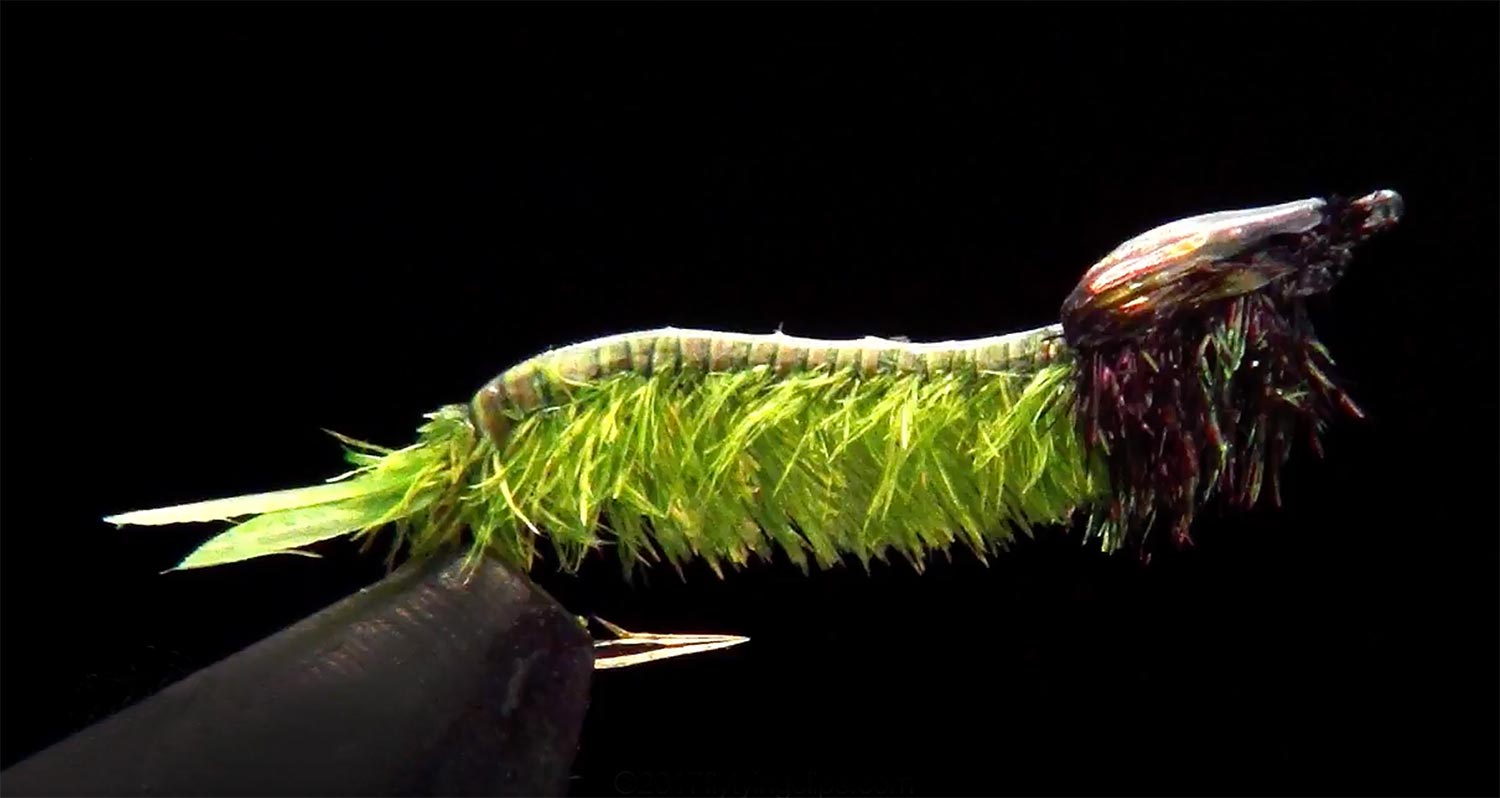
By Herman deGala
Here’s some advanced technique for tying flies with peacock quills.
Fly tying has always been the art of linking a series of techniques to achieve an overall design. Innovative techniques are often a result of problem solving.
I have always enjoyed the look of wrapped peacock quills and the beautiful segmented bodies they create with simple turns. I also enjoy the iridescence of peacock barbules and their fish catching attributes. I have come up with a simple way to combine both of these attributes.
I DEMONSTRATE IT HERE WITH A SIMPLE HYDROPSYCHE. I AM SURE YOU CAN THINK OF MANY MORE APPLICATIONS WITH YOUR OWN TYING.
Read More »Keep a Backup Nymph Rig Ready
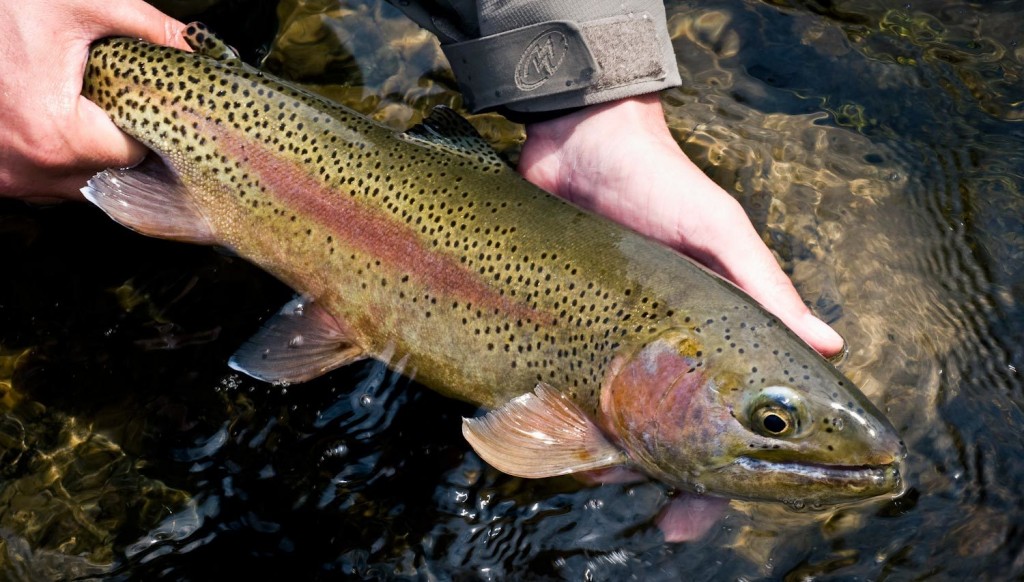
Changing out flies on the water takes time but is often necessary to catch trout consistently all day.
Keeping a pre-rigged tandem nymph rig ready to go, will allow you to quickly change out your flies from one hole to the next and save you critical time when your fishing time is limited. They’re great to have when you find your hot fly has turned cold, when you break your rig off on a snag or find yourself with a nasty tangled mess. Let’s face it, we often find ourselves in question on the water, particularly in the first hour after we’ve wet our line. It can take some time to figure out what the trout want for the day, and by having a couple different pre-rigged tandem nymph rigs on hand, you’ll find it much more efficient to try multiple fly patterns and rigs out, and that should help you dial-in quicker and start catching trout.
Sometimes the tandem nymph rig you just caught trout with in the hole downstream, may fail to get the attention of the trout in the next hole you fish. This isn’t always the case, but sometimes for sure. In fact, this happened to me just the other day. My client had landed a fish out of the first three holes we fished in the morning with a woolly bugger lead fly and a micro san juan worm dropper. As my client worked the fourth hole of the day, the bites abruptly stopped, despite him making several great presentations and drifts. Knowing there were fish in the hole, I snipped off the rig and tied on one of my different pre-rigged nymph rigs. First cast, my client landed a trout, and he went on to catch another fish after that. If I would have stuck with the first rig, thinking the flies were fine because they worked in the previous holes, we probably wouldn’t have landed those two fish. There is no doubt there are times when trout will key in on a specific aquatic insect and become selective feeders. However, some days,
Read More »Fighting Big Fish on Tenkara Rods
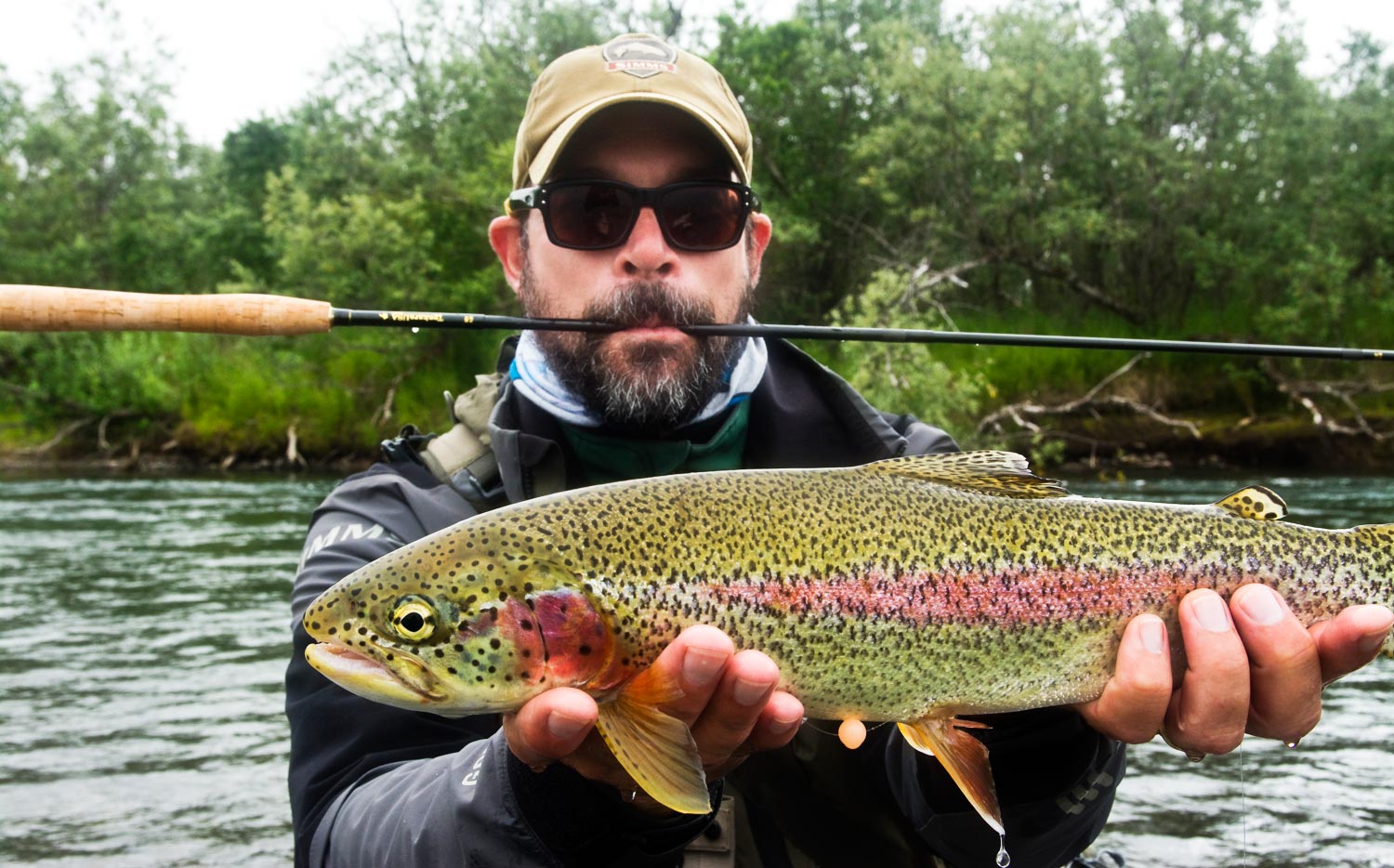
When I got my first tenkara, I couldn’t wait to break it.
The prevailing idea seemed, and still seams to be, that tenkara rods are for catching small fish. I took that as a challenge. I met Daniel Galhardo of Tenkara USA for a beer and told him I was going to Alaska to chase big rainbows and I wanted to take a tenkara rod.
“What kind of rod are you thinking?” He asked me.
“The smallest one you make.”
That’s how my Rhodo and I ended up going to Alaska. My buddy Aleks took a tenkara rod, too. A Sato, and we discovered that, not only can you catch big fish on tenkara rods, but it’s a hell of a lot of fun. By the second day everyone in camp was asking to try the rods, guides included.
I’m no tenkara master, but I’ve fought my share of big fish. Nothing I’m about to tell you is wisdom passed down through the generations. It’s mostly stuff I figured out myself in the heat of the moment. Some of it’s just good fish fighting with any rod but some of it is very, very different. I’ll tell you this. With what I’ve learned in last year I no longer think about breaking that little rod.
I should say from the very start that hooking your first 20-inch Alaska rainbow on a tenkara rod is an “Oh-shit moment” on par with hooking your first tarpon. That first big fish is worth the price of the rod. Just to experience the feeling of instinctively reaching for your reel and finding it AWOL. If you are not the kind of person who adapts well to change, this is a good time to learn!
Tactics for fighting big fish on tenkara rods
Read More »Tying On The Road
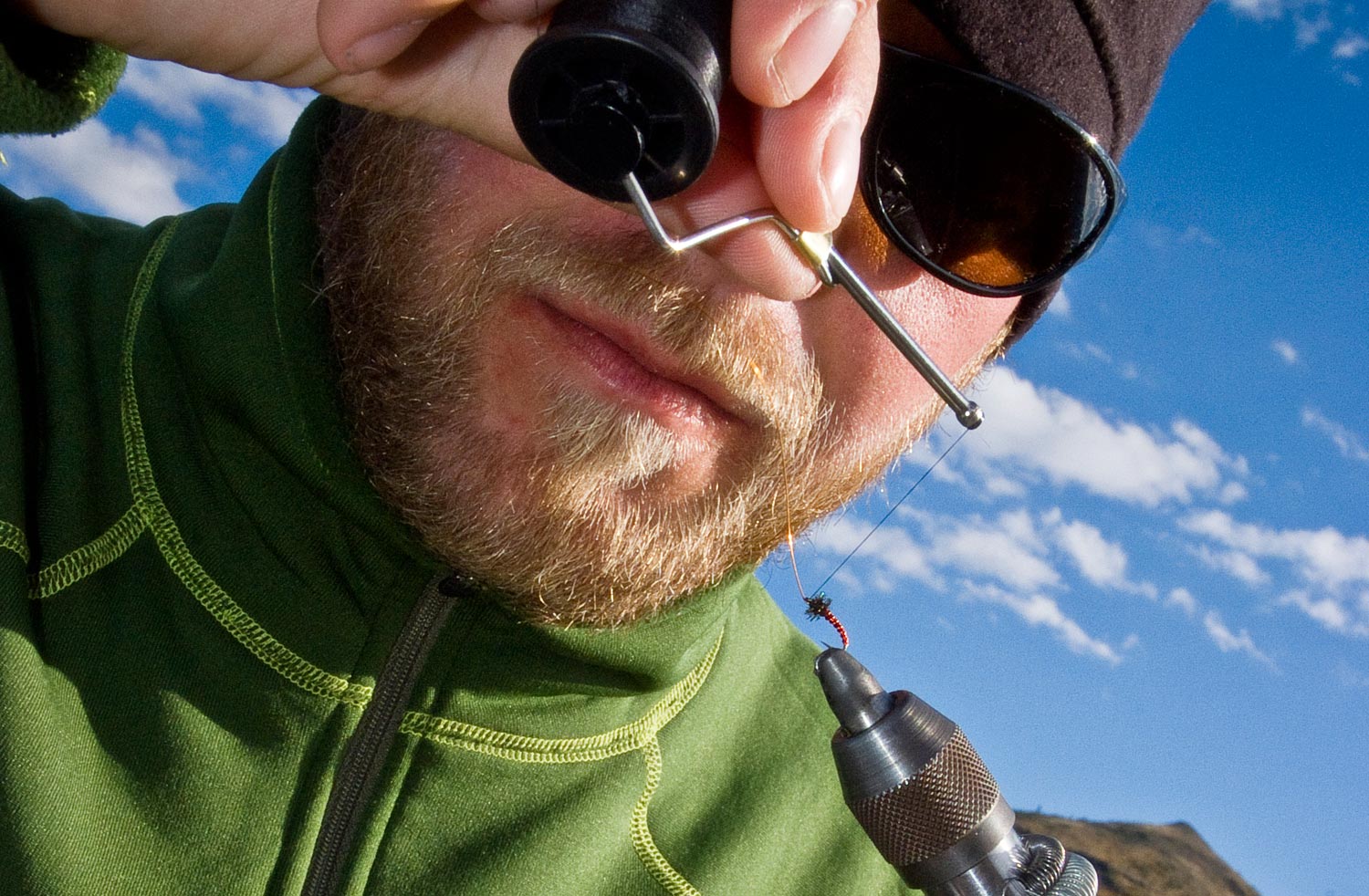
When Kent and I hit the road for a Gink and Gasoline outing, among the pile of rods, waders, cameras and Cliff Bars there’s always a canvas tool bag stuffed to the gills with feathers and fur. It’s generally a ridiculous amount of materials. Way more that we could ever use. Everything we need to tie a thread midge or a streamer that looks like something Elton John wore in the 70s.
I don’t care how well you plan for a trip you always need just one more of that hot fly. Maybe there’s an unexpected hatch or maybe a sudden inspiration. In any case that bag of feathers has saved more than one trip.
I’ll never forget a subfreezing night we spent in a fish camp on the White River in Arkansas tying shad patterns. We would tie a fly, bundle up and scramble out to the river to try it out
Read More »3 Reasons It’s Time to Change Flies
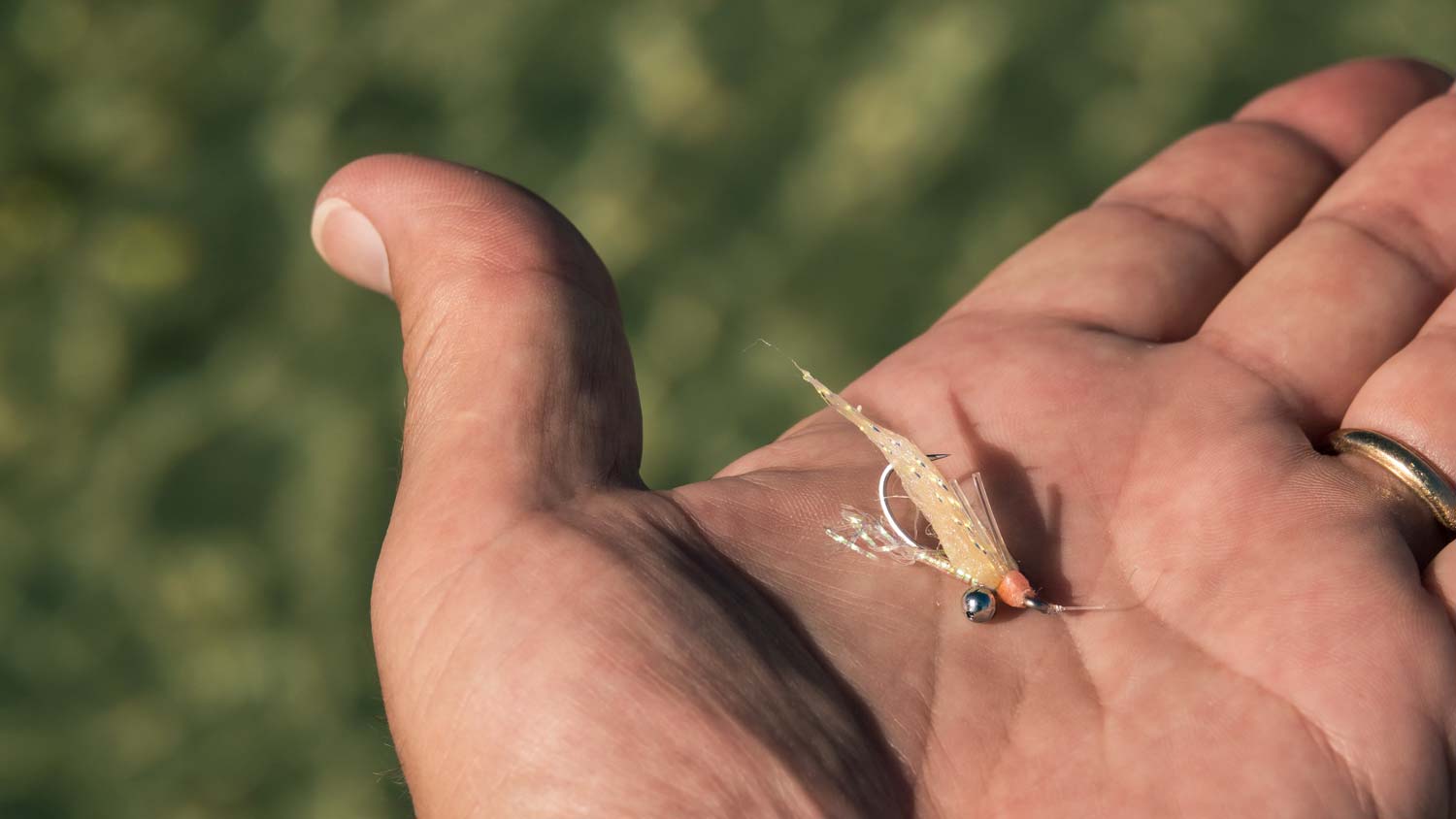
By Louis Cahill
When I looked at this fly, I saw three things wrong—any one of them deserving a fly change.
I was fishing with a friend at the January Bonefish School and he made a couple of good presentations that were refused by fish. I asked if I could have a look at his fly and immediately knew why the fish were not impressed. Understand, he was there to learn and asked for my help, I don’t just critique people’s flies for fun.
Take a close look at the photo above and see if you spot the three things keeping this fly out of a bonefish’s mouth.
First and foremost, the hook is starting to straighten. Proof that the fly had been working at some point. Although this might not keep a fish from eating the fly, it will keep you from landing it if it does. Bending the hook back causes metal fatigue and it will never be as strong. Your next fish might be the biggest of your life. Better to change it.
2. The wing and eyes have
Alice’s Angle: November
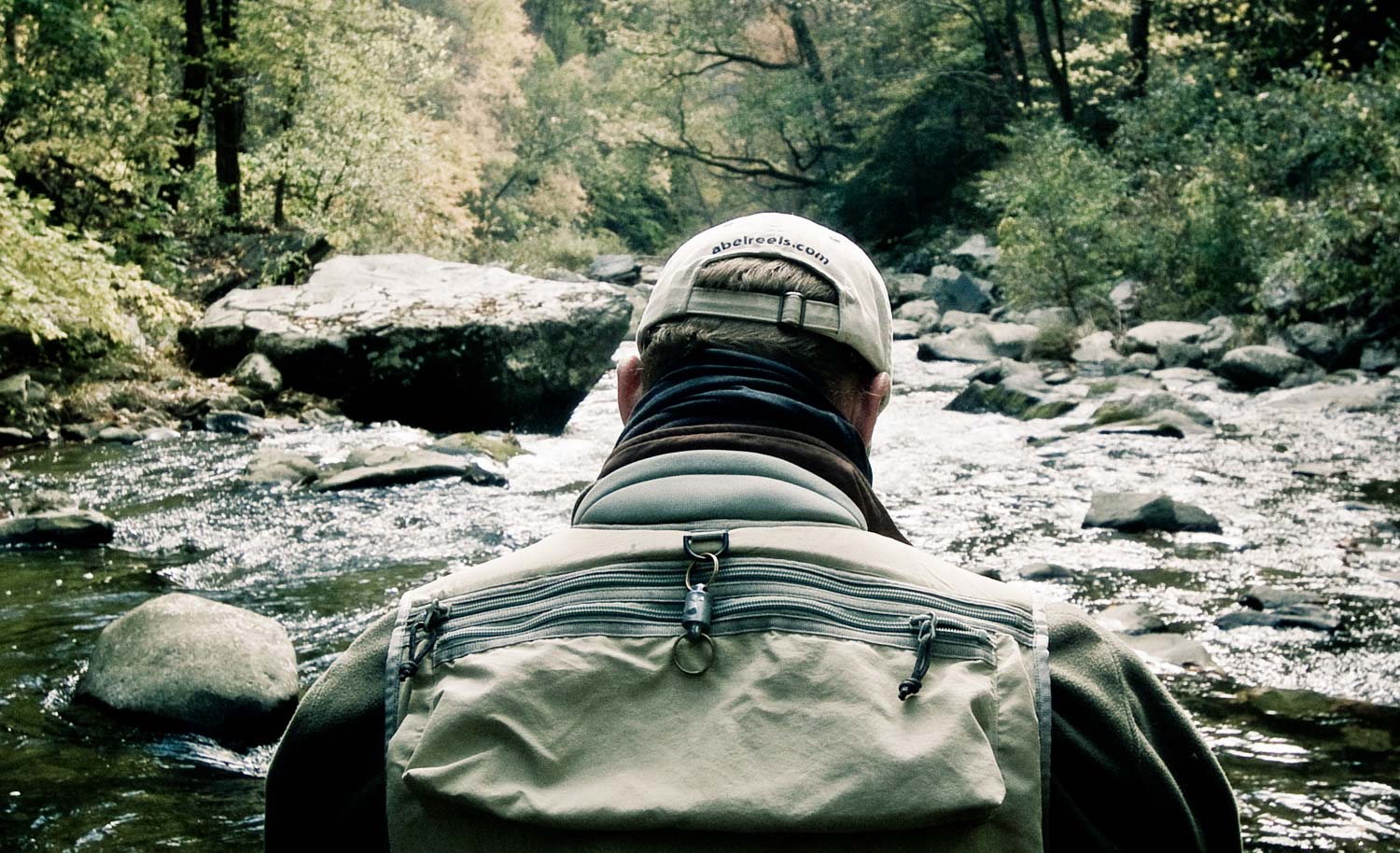
By:Alice Tesar
A couple of tips for successful fishing in November.
A frequent customer stopped into the fly shop early September announcing that he had been greatly enjoying “Adult Summer.” Adult Summer is more commonly referred to as the nation’s fall season. Children are back in school for 6-8 hours a day and parents, in this man’s case, can have a bit of flexibility over their lunch breaks. So sip your coffee slowly, eat a hearty hash breakfast, drop the kiddos at school, and continue to take advantage of Adult Summer into the winter months.
The most wonderful part of November fishing is that the fish don’t begin eating until later in the morning. I like to get on the water just after the sun has danced across the water. Air temperature should be 45-55 degrees Fahrenheit before you get on the river. Freezing nights push the fish into deep pools and slow water to conserve energy. It’s only as things warm up in the day that they become more active and hungry. Streamers, with various actions stripped through deep pools require a clean presentation but can effectively get the aggressive Brown Trout riled up. Please, avoid harassing them around redds. As for fall mayfly hatches, you should be looking for Blue Winged Olives and Mahogany Duns.
The Mahogany is one of my favorite hatches to fish, if not for its sporadic occurrence then for how the Trout eat them. Trout feast on Mahogany Duns the same way you might approach Thanksgiving Dinner, hungrily but not aggressive or snappy. After all, it is a holiday of gratitude. The slow water of a dry summer causes the Duns to drift long distances, so Trout analyze their eats and don’t snap at every surface twitch. Hit the river an hour
Read More »Cool Enough For You?
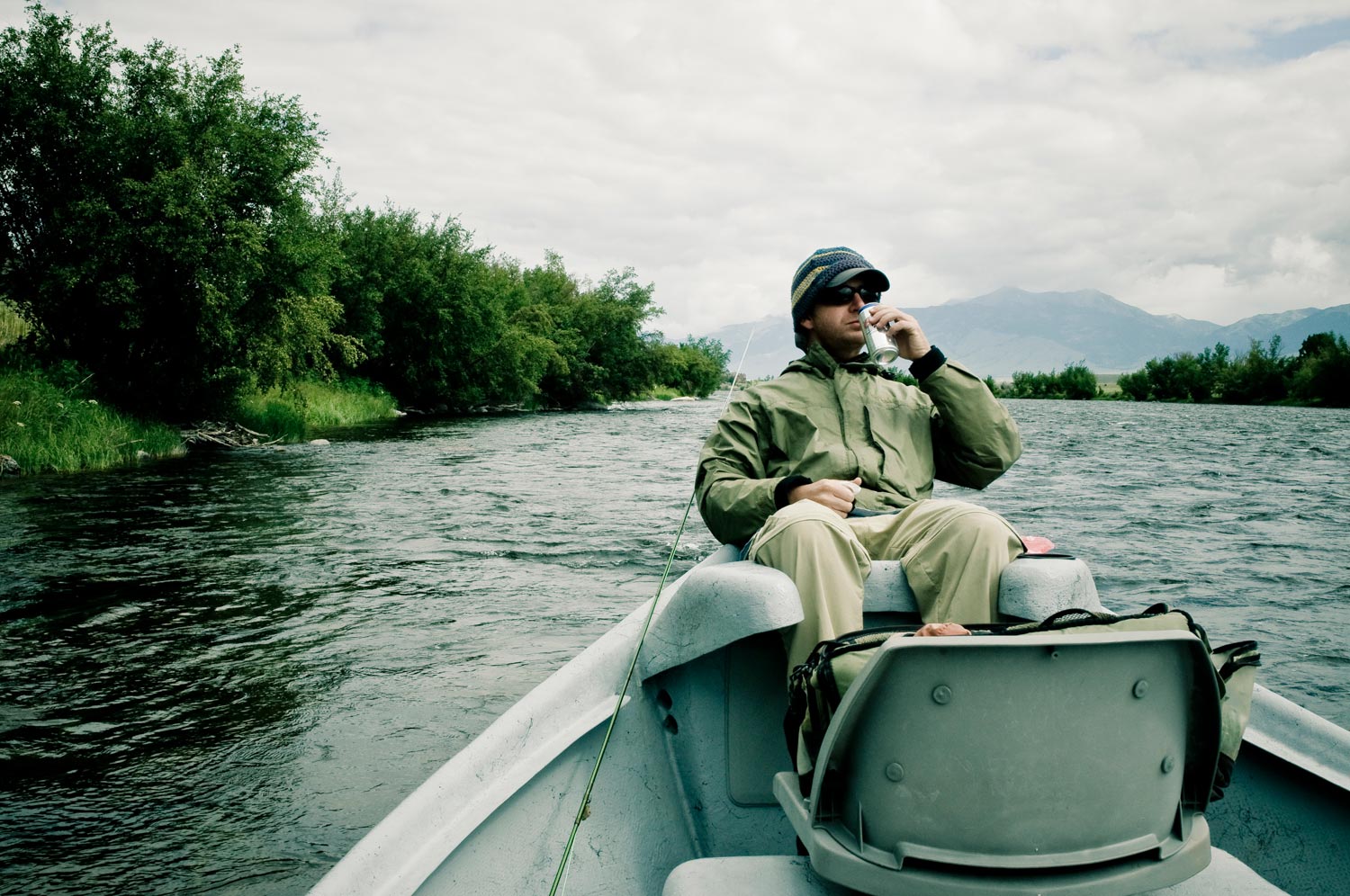
EVERY JOURNEY STARTS WITH A SINGLE CAST.
For some reason, this morning I’m thinking of losing a fish. A big fish and, worst of all, someone else’s fish. That’s the worst kind to lose.
A hundred years ago, when I was still pretty much a Gomer, my wife bought me a guided day of fishing on a private trout stream. That’s a pretty common experience here in Georgia. I’d been catching pretty average trout on my own for some time and, like most novice fly fisherman, I had been sucked into lusting after the monster trout I saw on the covers of fly fishing magazines. In the same way that young girls get the idea that they are supposed to look like Barbie, I was dying to see a photo of myself holding some massive drooling piscivore. This obsession was just as healthy as a case of bulimia and pulling it off seemed just as likely as my looking like Barbie. My darling wife had clearly heard enough about it and sought professional help.
I’d never been guided before and was wholly uncomfortable with the idea. I’ve never been comfortable asking for help and still feel a little guilty about being waited on in restaurants. Having a guide tie my flies on was excruciating. The guide, who’s name has long faded from my memory, was great and I learned a lot from him but I was so nervous about fishing in front of a professional that I was a shit show for most of the morning.
By lunch time I was fishing like I had a brain and, with me more relaxed, my guide able to put me on some nice fish and actually enjoy the afternoon himself. He expressed an interest in my bamboo rods and I insisted he take one and fish with me the rest of the day. I’m sure that made him nervous as hell but I felt a whole lot better. For the minute.
Read More »Taming Marabou Tails
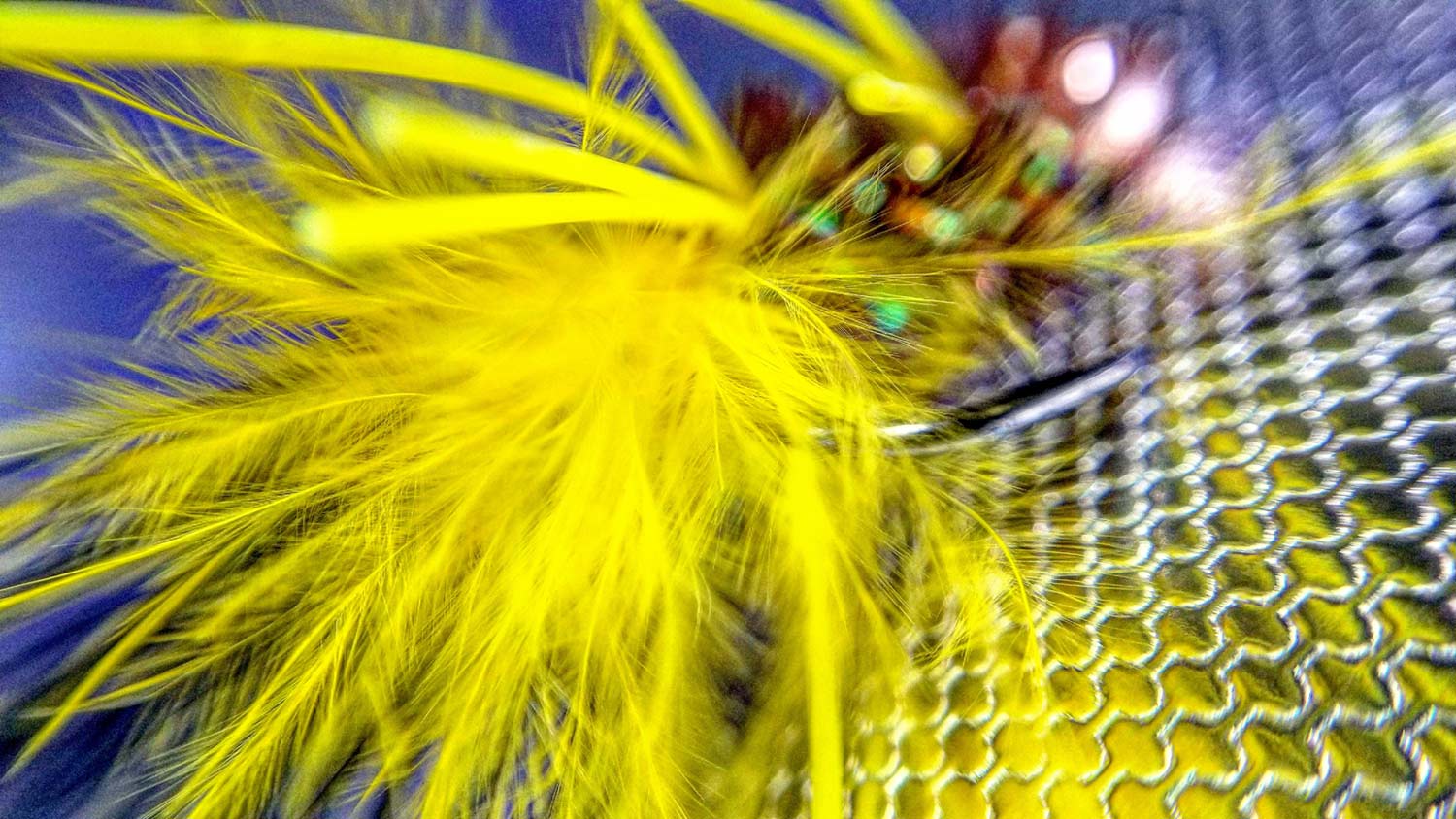
By Bob Reece
As we move toward spring, the presentation of streamers increases for many fly fishers.
For those of us that tie our own, the use of some materials is far more common than others. Marabou tends to be one of those materials, particularly in the tails of many bugger style streamers.
The underwater effectiveness of this material cannot be denied. However, for the time invested behind the vise, marabou can be an unruly material to work with. It has the ability to fly, float and crawl its way throughout any available surface. This attribute can often slow down the tying process and impact the efficiency of the tier.
When sitting down to tie any pattern, I try to make the most of my tying time. When creating patterns with marabou tails, I use a simple trick to mass produce them prior to tying. As I cut off the allotted amount of marabou for one tail, I hold the separated material in my left hand. I then moisten my thumb, index and middle finger of the right hand. Using my right hand, I twist the butt ends of the marabou together and set the tail off to the side. This moistened twist hold the fibers together, even after it dries, until I’m ready to tie them in.
Read More »Bruce Chard’s Key Lime Pie Tarpon Fly
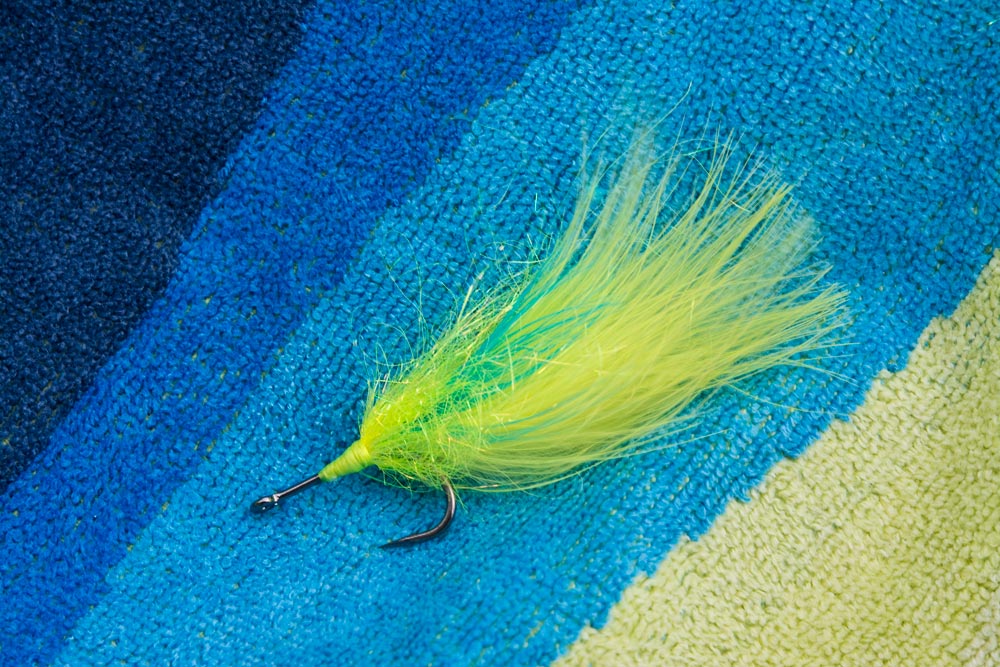
SPOOKY TARPON? NO PROBLEM.
Feeding tarpon a fly on bluebird days when the sun is high and the water is clear can be quite a challenge. It’s always a little mind blowing to see a six foot long monster run from a three inch fly bit it happens more times than not when conditions are tough.
When it comes to fooling tarpon, I don’t know anyone with a better track record than Bruce Chard. Today Bruce is going to share with us a simple fly that turns those tough days into hero shots. He calls it the Key Lime Pie, because it’s just that hard to resist.
Watch the video and learn to tie Chard’s Key Lime Pie.
Read More »Caring for Bamboo Fly Rods
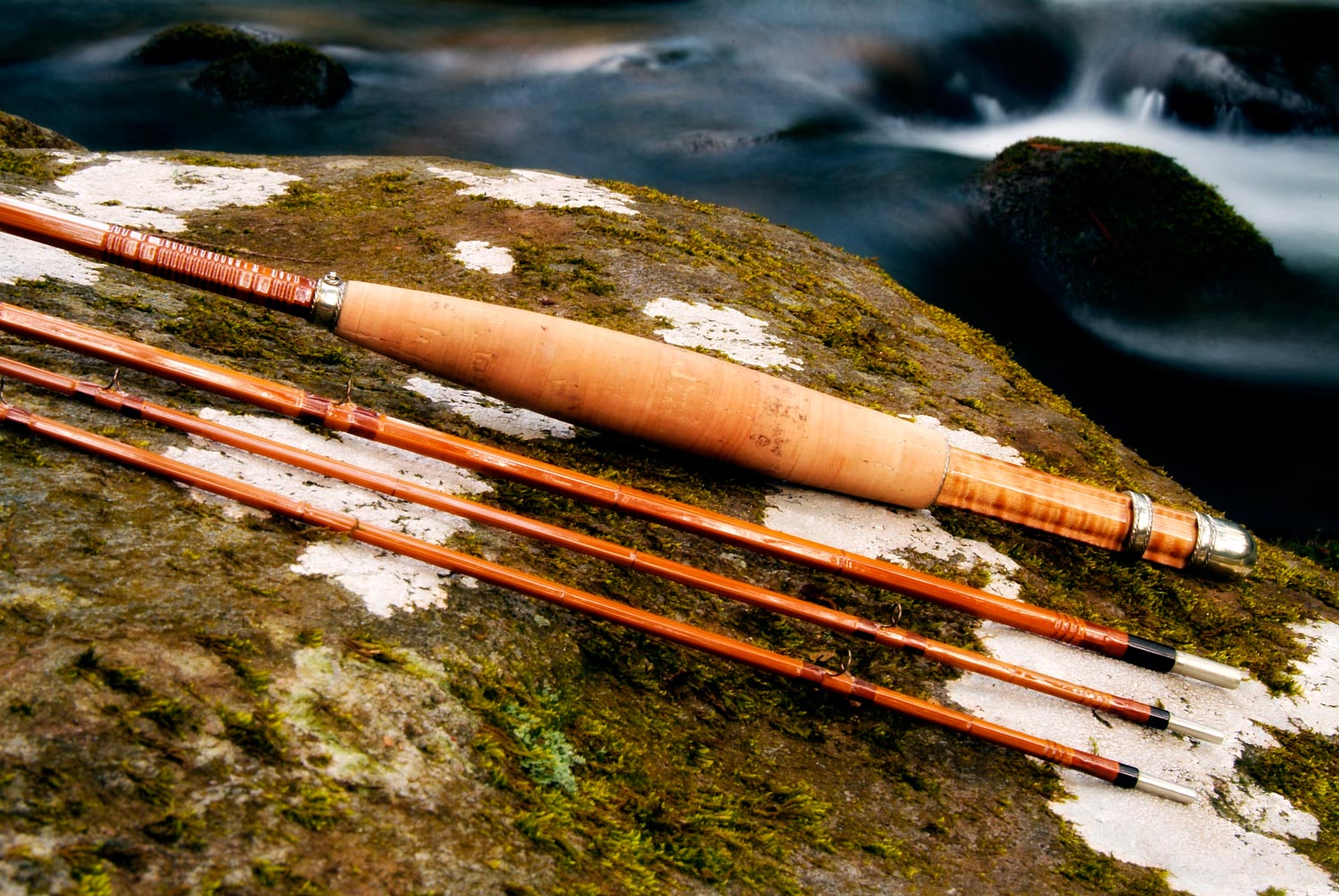
I’ve had several folks request some content on making simple repairs to bamboo fly rods.
I fully intend to to that for you, but it means that I have to find the time to get in the shop. That seems unreasonably difficult these days. Before I get into doing repairs, I thought it would be prudent to write about caring for that bamboo rod and maybe avoid some repairs all together.
Bamboo is not as finicky as most people think. In fact it’s remarkably tough but there are some basic rules for handling and storing rods that will add to their longevity significantly. Unfortunately, too many guys end up with a nice bamboo rod before they know how to care for it and learn the hard way.
Most guys start out with graphite rods and assume that you treat a bamboo rod the same way. It’s a fly rod, right? Yes, but the materials are very different and some very common practices that are fine with a graphite rod will do serious harm to the boo.
General Care
I’ll start with the simplest and most common thing boo nubes do to their rods.
